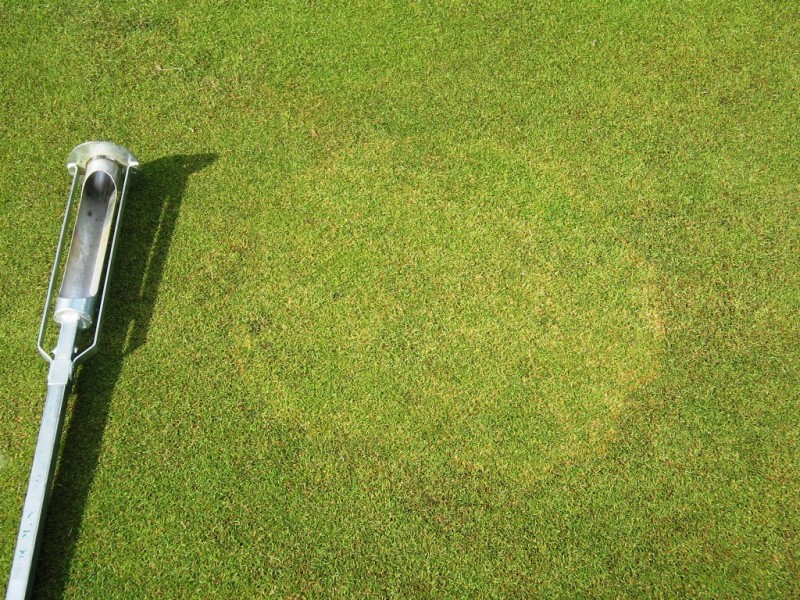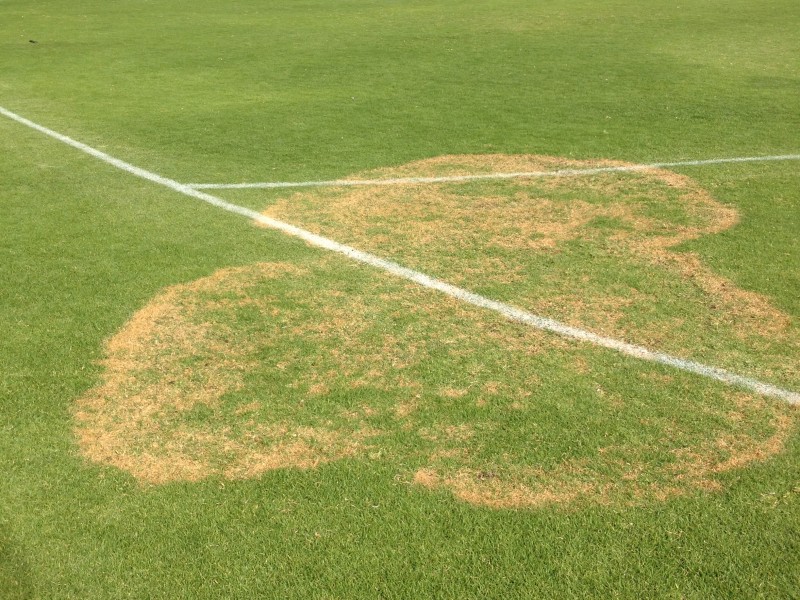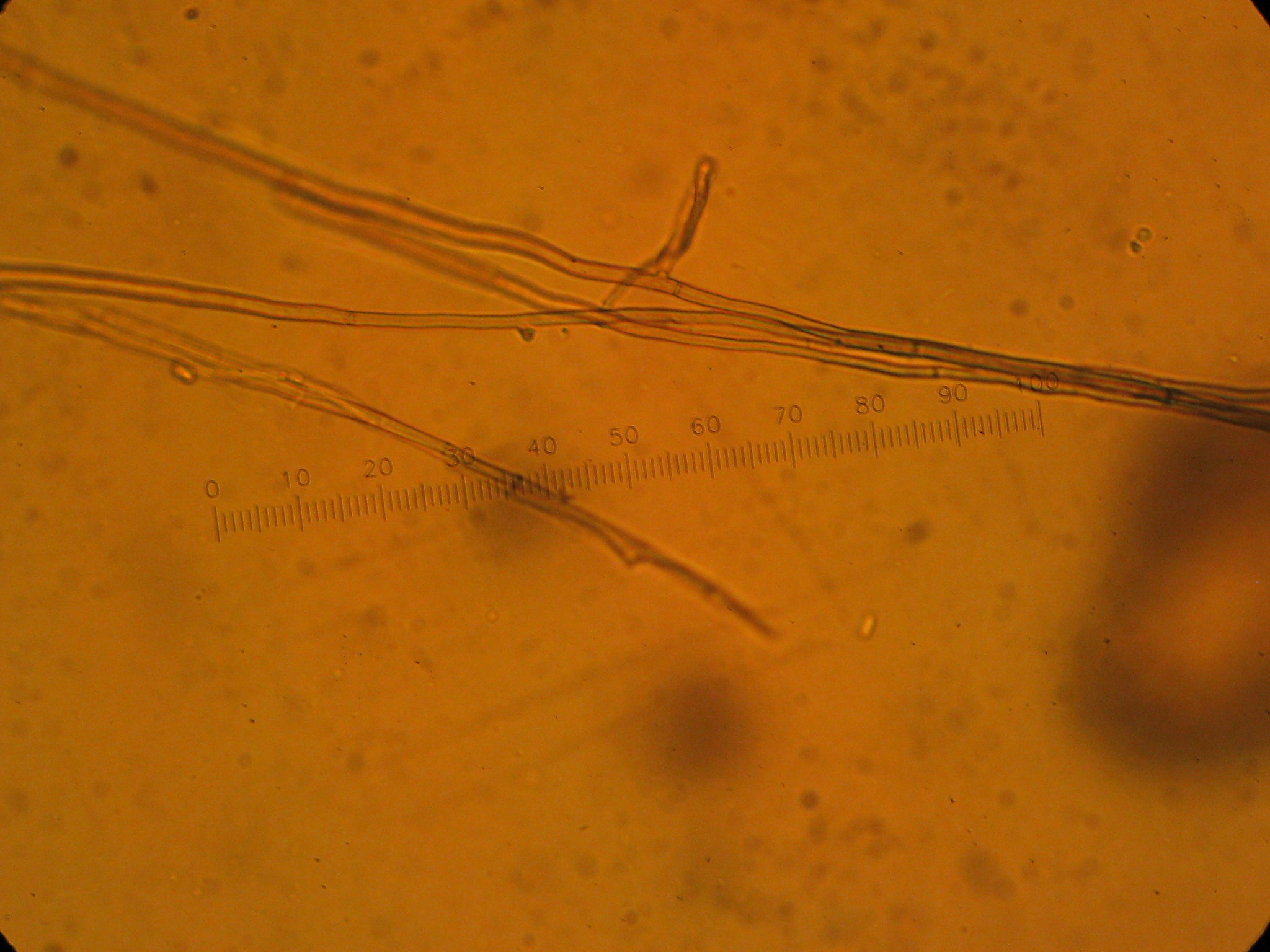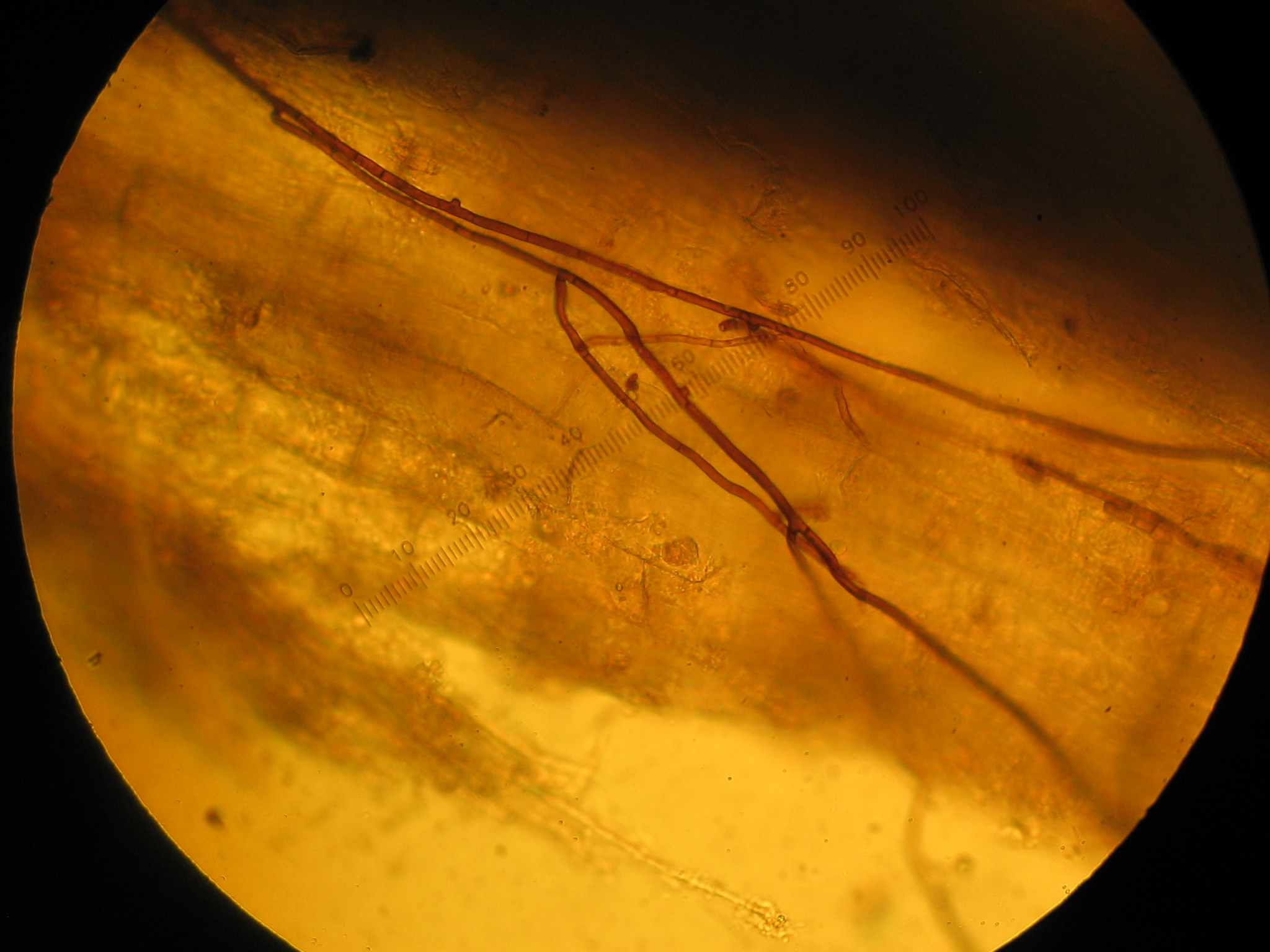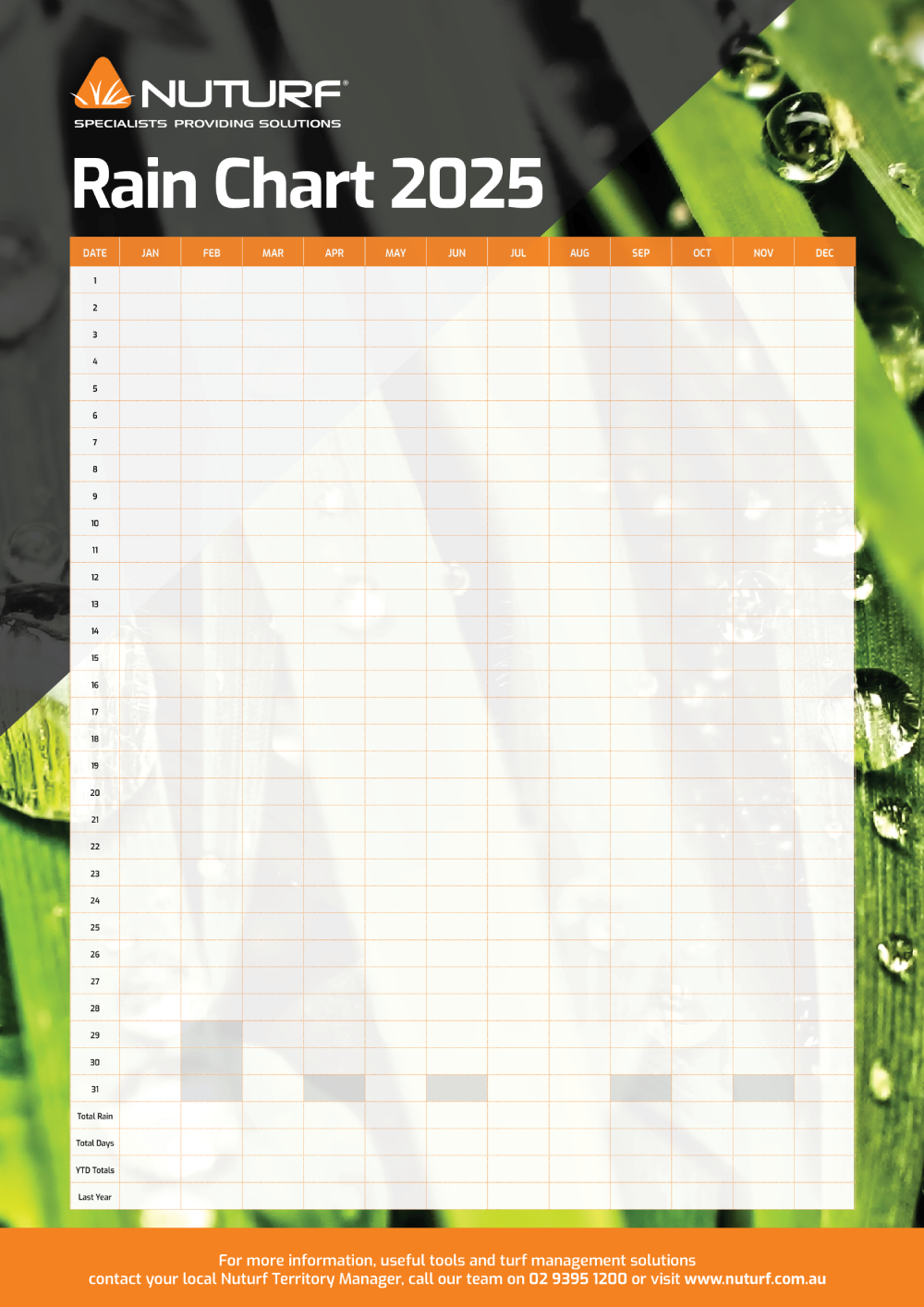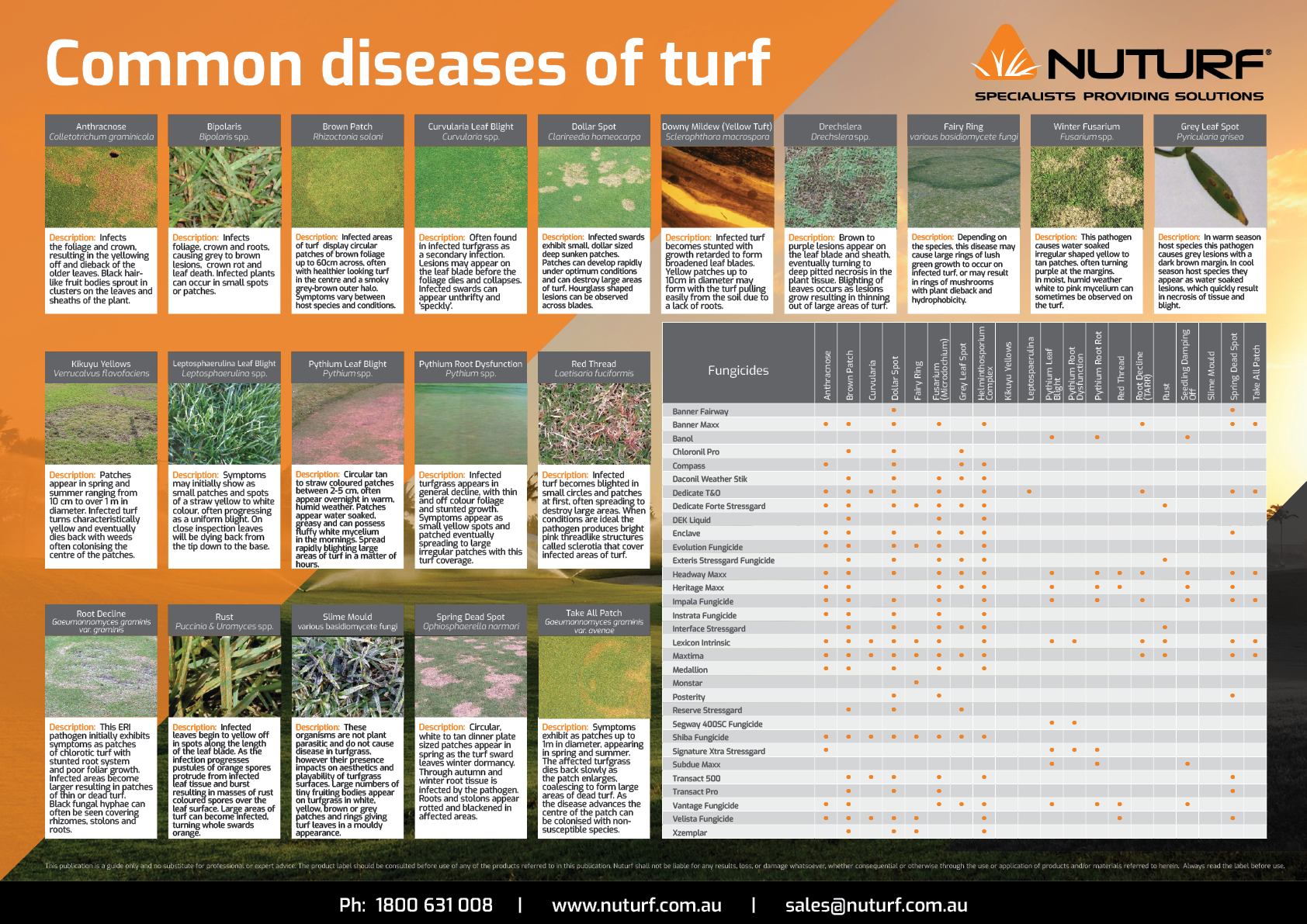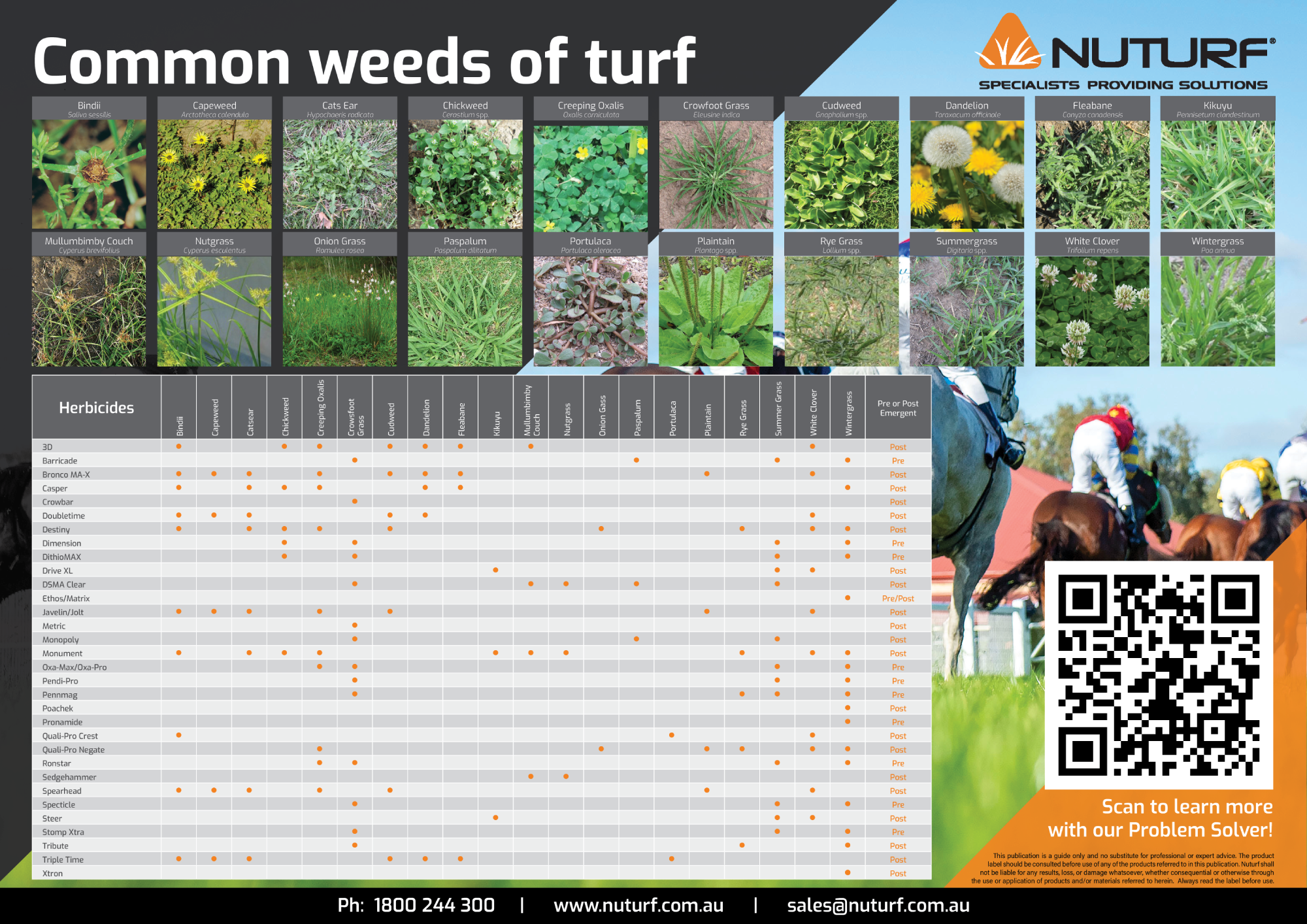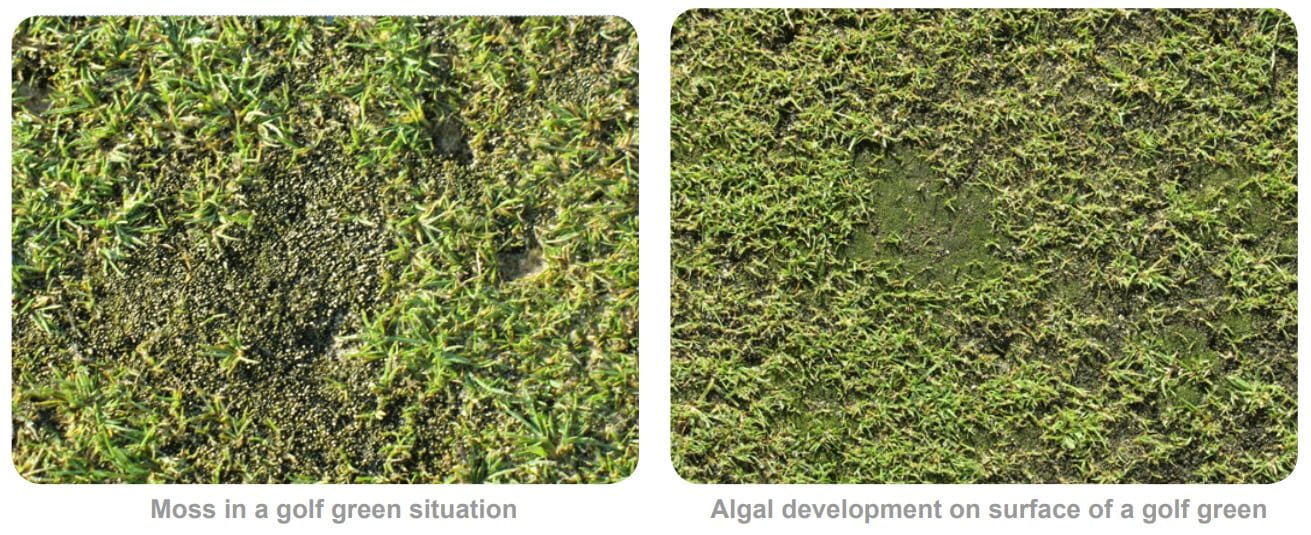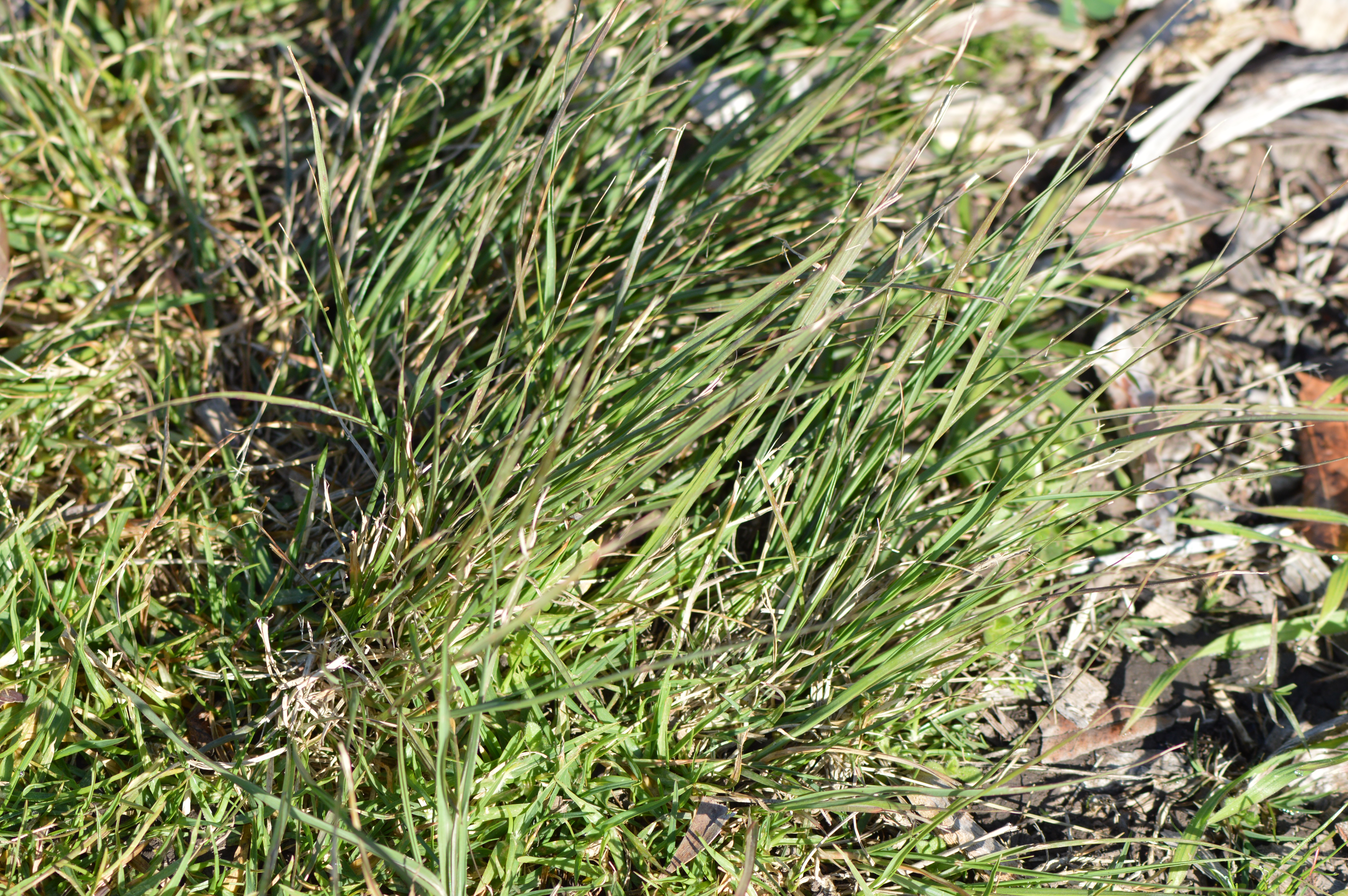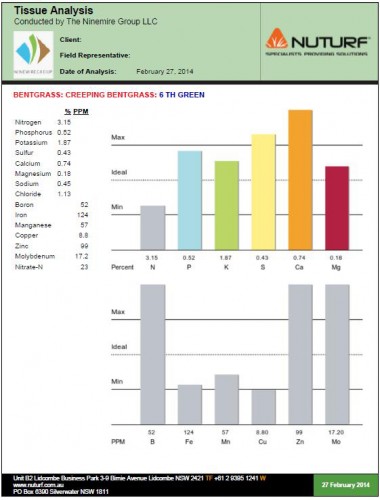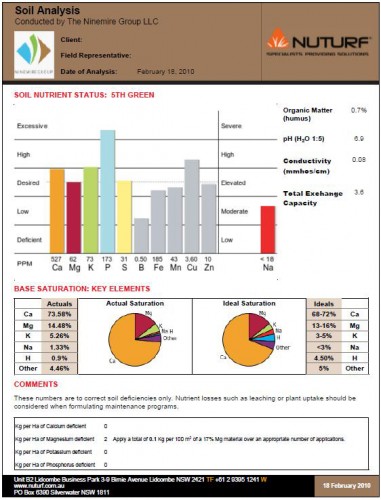Brown Patch
- Problem Solver
- Disease
- Brown Patch
Brown PatchCausal AgentRhizoctonia solani What is Brown Patch?Brown Patch is a fungal turf disease that primarily affects the roots and crowns of the plant and is caused by Rhizoctonia solani. What are the Symptoms of Brown Patch?The symptoms of Brown Patch can vary depending on the grass cultivar, climatic and atmospheric conditions, soil and intensity of turfgrass management. Brown Patch is most severe in Spring and Autumn. Brown Patch infestation is more severe when the turf is cut shorter than the optimum height of the type of turfgrass being grown. General symptoms of Brown Patch include:
|
|
|
|
|
What Causes Brown Patch?Brown Patch is caused by a pathogen known as Rhizoctonia solani. Rhizoctonia solani is a soil-borne fungus that can be found in most soils and is known as a cause of disease in both established and seedling turfgrasses. The disease does not produce spores but instead spreads rapidly by mycelial contact. The disease is disseminated via movement of sclerotia which are produced and remain in thatch material. Rhizoctonia solani has a characteristic mycelium over other patch diseases, whereby the mycelium branches at a 90-degree right angle, allowing for accurate diagnosis in the lab. When Does Brown Patch Occur?In general, the conditions favouring Brown Patch are:
What Turfgrasses are especially susceptible to Brown Patch?Wintergrass, Couch, Bentgrass, Fescues, Kentucky Bluegrass, Ryegrass & Buffalo Grass. What can I do to manage Brown Patch disease?High levels of nitrogen can increase the potential for Brown Patch infection. Hence, fertilisation with a high nitrogenous fertiliser prior to periods of high humidity should be avoided where possible. Other measures to manage Brown Patch include:
For chemical solutions or treatments for Brown Patch, please see the recommended products below. |
Product Solutions for Brown Patch
-
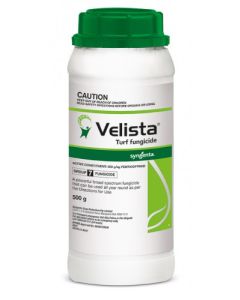 Velista Turf FungicideActive: 500 g/kg Penthiopyrad
Velista Turf FungicideActive: 500 g/kg PenthiopyradVelista is a powerful broad spectrum fungicide that can be used all year round and can be trusted to keep your turf in excellent condition especially when high temperatures and high humidity hit your facility.
$473.00 incl. GST -
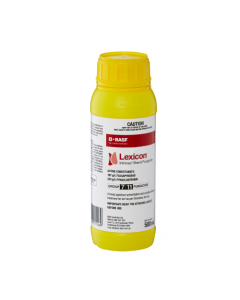 Lexicon Intrinsic FungicideActive: 167g/L fluxapyroxad
Lexicon Intrinsic FungicideActive: 167g/L fluxapyroxadLexicon delivers peak performance under pressure, optimising disease control and providing plants with longer, stronger roots and increased growth.
$506.00 incl. GST -
 Exteris Stressgard Fungicide12.5g/l Fluopyram
Exteris Stressgard Fungicide12.5g/l FluopyramExteris Stressgard Fungicide provides outstanding broad-spectrum disease control, turf quality and application flexibility. Contains a unique SDHI active ingredient as well as new Leaf-Cote technology to improve spray droplet coverage and retention, as well as reduce dry time on the leaf.
$651.20 incl. GST -
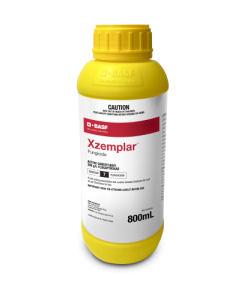 Xzemplar™ FungicideActive: 300g/L Fluxapyroxad
Xzemplar™ FungicideActive: 300g/L FluxapyroxadXzemplar™ is a turf fungicide offering advanced systemic movement of the active ingredient, Fluxapyroxad. Xzemplar combines a quick knockdown and powerful, long lasting control.
$825.00 incl. GST -
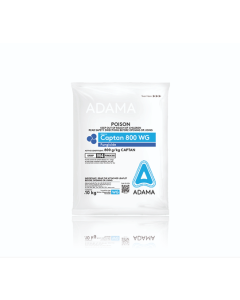 Captan 800 WG FungicideActive: 800g/kg Captan
Captan 800 WG FungicideActive: 800g/kg CaptanCaptan 800 WG controls a broad spectrum of diseases in turf, ornamentals as well as a range of crops including apples, almonds, grapes, pears, pistachios, stonefruit and strawberries.
$291.50 incl. GST -
 Patriot FungicideActive: 200g/L Tebuconazole
Patriot FungicideActive: 200g/L TebuconazolePatriot Fungicide is a broad spectrum fungicide containing 100 g/L of the active ingredient Trifloxystrobin and 200 g/L Tebuconazole.
$443.30 incl. GST -
 Quali-Pro Enclave FungicideActive: 365g/L chlorothalonil
Quali-Pro Enclave FungicideActive: 365g/L chlorothalonilQuali-Pro Enclave is registered for the broad spectrum, eradicant, curative and preventative control of Brown Patch, Fusarium Patch, Anthracnose, Dollar Spot, Helminthosporium, Grey Leaf Spot and Spring Dead Spot in all recreational turf management situations.
$632.50 incl. GST -
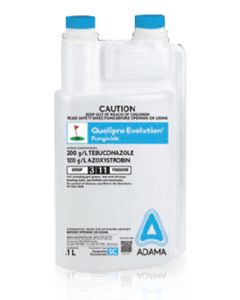 Quali-Pro Evolution FungicideActive: 200g/L Tebuconazole
Quali-Pro Evolution FungicideActive: 200g/L TebuconazoleEvolution Fungicide is a premium, fungicide mixture containing 120 g/L of the active ingredient Azoxystrobin and 200 g/L Tebuconazole.
$302.50 incl. GSTOut of stock -
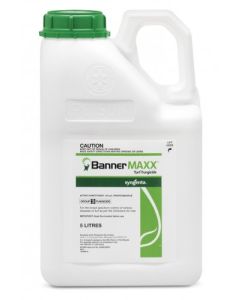 Banner Maxx FungicideActive: 15.5% Propiconazole
Banner Maxx FungicideActive: 15.5% PropiconazoleBanner Maxx is early curative treatment, providing systemic broad-spectrum control of Dollar Spot, Winter Fusarium, and the ERI complex (Couchgrass Decline and Take-all Patch).
$375.10 incl. GST -
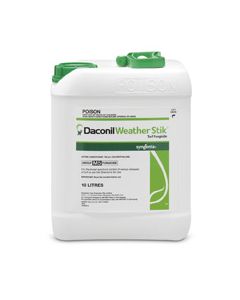 Daconil Weatherstik® Turf FungicideActive: 720g/L Chlorothalonil
Daconil Weatherstik® Turf FungicideActive: 720g/L ChlorothalonilDaconil Weather Stik is a contact fungicide that can be used in preventative programs. It can be used as an early curative after the first signs of disease become evident.
$397.10 incl. GST -
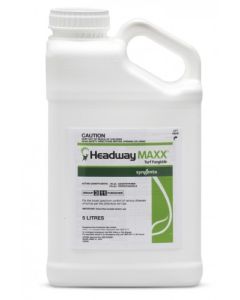 Headway Maxx FungicideActives: 62g/l Azoxystrobin, 104 g/l Propiconazole
Headway Maxx FungicideActives: 62g/l Azoxystrobin, 104 g/l PropiconazoleHeadway Maxx combines the strength, longevity and broad spectrum of Heritage Maxx with the speed and early curative action of Banner Maxx in an unbeatable combination.
$809.60 incl. GST -
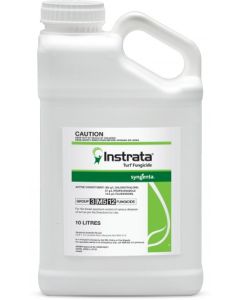 Instrata Turf FungicideActive: 36.2% Chlorothalonil
Instrata Turf FungicideActive: 36.2% ChlorothalonilInstrata is an excellent choice for use in a preventative program or curatively after first symptoms are evident.
$518.10 incl. GST -
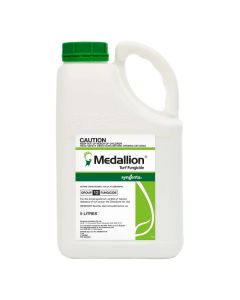 Medallion Turf FungicideActive: 125g/l Fludioxonil
Medallion Turf FungicideActive: 125g/l FludioxonilMedallion Turf Fungicide offers contact plus – exceptional spore busting capabilities on the leaf, in the thatch, and on the soil surface.
$1,156.10 incl. GST -
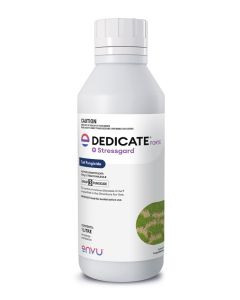 Dedicate Forte Stressgard FungicideActive: 240g/l Tebuconazole
Dedicate Forte Stressgard FungicideActive: 240g/l TebuconazoleDedicate FORTE Stressgard® is a broad-spectrum DMI fungicide containing tebuconazole (240 g/L) with Stressgard Formulation Technology, and controls tough soil-borne and foliar fungal diseases in both cool and warm season turfgrass.
$297.00 incl. GST -
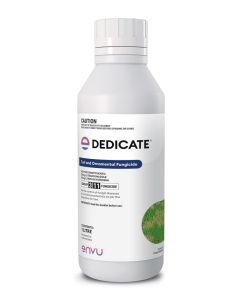 Dedicate Turf and Ornamental FungicideActive: 100g/L Trifloxystrobin
Dedicate Turf and Ornamental FungicideActive: 100g/L TrifloxystrobinDedicate turf fungicide contains two active ingredients with two different modes of action, providing curative and preventative control. It has a contact and systemic action in turf which provides broad spectrum control.
$517.00 incl. GST -
 Interface Stressgard FungicideActive: 256g/L iprodione
Interface Stressgard FungicideActive: 256g/L iprodioneInterface with Stressgard Formulation Technology offers the new standard in turf protection and is Bayer’s most powerful turf fungicide to-date. It manages disease stress leading to improved turf quality and playability.
$517.00 incl. GST -
 Reserve Stressgard FungicideActive: 720g/L Chlorothalonil
Reserve Stressgard FungicideActive: 720g/L ChlorothalonilReserve Stressgard turf fungicide is a contact and protectant fungicide for the control of fungal diseases in turf.
$401.50 incl. GST -
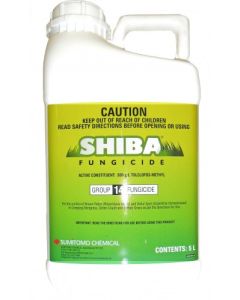 Shiba FungicideActive: 500g/L Tolclofos-methyl
Shiba FungicideActive: 500g/L Tolclofos-methylShiba fungicide is a liquid suspendable concentrate of Tolclofos methyl 500g/L, and has been specifically registered for the treatment of Brown Patch and Dollar Spot.
$247.50 incl. GST -
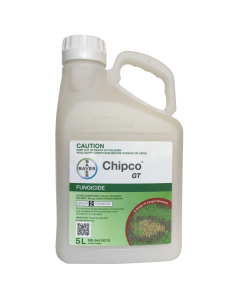 Chipco GT Fungicide240 g/L iprodione
Chipco GT Fungicide240 g/L iprodioneChipco GT is a broad-spectrum fungicide providing unsurpassed control of brown patch, dollar spot, various leafspots, and a variety of other turf diseases.
$284.90 incl. GSTOut of stock -
 Azoxy 250 T&O FungicideActive: 250g/L Azoxystrobin
Azoxy 250 T&O FungicideActive: 250g/L AzoxystrobinAzoxy 250 T&O Fungicide (active constituent Azoxystrobin) is an effective xylem systemic fungicide that delivers excellent protection for up to 28 days against a wide spectrum of Turf, Nursery Stock and Ornamental diseases.
$330.00 incl. GST -
 Dek Liquid Fungicide 10LActive: 420g/L Mancozeb
Dek Liquid Fungicide 10LActive: 420g/L MancozebLiquid Dek is a contact fungicide that works by forming a protective barrier around the plant tissue (i.e. chemical barrier between the fungus and the plant).
$253.00 incl. GST -
 Transact 500 Fungicide 5LActive: 500g/L Iprodione
Transact 500 Fungicide 5LActive: 500g/L IprodioneTransact 500 is a broad spectrum fungicide containing 500 g/L of the active constituent Iprodione. It is registered for the control of Brown Patch, Dollar Spot, Fusarium Patch, Spring Dead Spot, Curvularia and Helminthosporium disease in all recreational turf situations. It is also registered for the control of Botrytis Blight in ornamental plant applications.
$265.10 incl. GST -
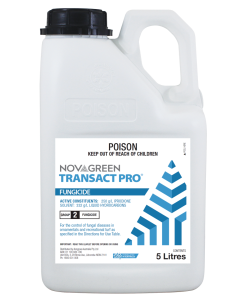 Transact Pro Fungicide 5LActive: 250g/L Iprodione
Transact Pro Fungicide 5LActive: 250g/L IprodioneTransact Pro is a premium locally systemic, broad spectrum fungicide containing 250 g/L of active ingredient Iprodione.
$238.70 incl. GST -
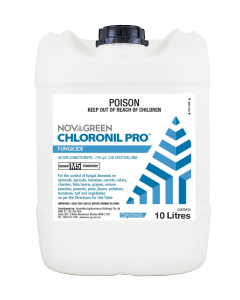 Chloronil Pro Fungicide 10LActive: 750g/L Chlorothalonil
Chloronil Pro Fungicide 10LActive: 750g/L ChlorothalonilChloronil Pro Fungicide is a broad spectrum, contact or protectant fungicide for the control of a range of diseases fruit, vegetables and turf. It is registered for the control of Brown Patch, Dollar Spot and Grey Leaf Spot in all recreational turf situations. It is also registered for the control of Botrytis, Grey Mould, Rust and Septoria and Alternaria Leaf Blight for application on ornamental plants.
$276.10 incl. GST -
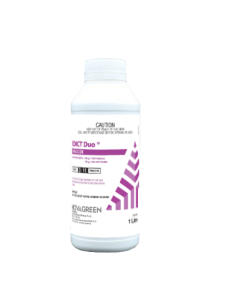 Edict Duo Fungicide 1LActive: 200g/L Tebuconazole
Edict Duo Fungicide 1LActive: 200g/L TebuconazoleEdict Duo is a broad spectrum fungicide containing the active ingredients Trifloxystrobin (100g/L) and Tebuconazole (200g/L). It is registered for the control of Anthracnose, Brown Patch, Winter Fusarium, Helminthosporium diseases (including White Helmo), Leptosphaerulina, Curvularia, Dollar Spot and ERI (Ectotrophic Root Infecting Fungi) diseases.
$440.00 incl. GST -
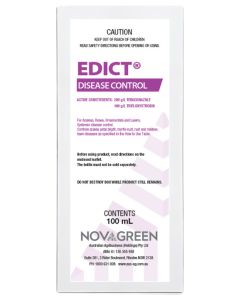 Edict Fungicide 100mLActive: 200g/L Tebuconazole
Edict Fungicide 100mLActive: 200g/L TebuconazoleEdict Disease Control is fungicide for use on Lawns, Azaleas, Roses, other general ornamental gardenplants. Edict Disease Control provides systemic andcontact disease control, both on a preventative andcurative basis. Edict controls Anthracnose, Brown Patch, Winter Fusarium, Leptosphaerulina (Leaf Blight), Curvularia (Fading Out) and Dollar Spot in lawn situations. Edict also controls azalea petal blight, myrtle rust, Botrytis Blight, Leaf Spots as well as mildew.
$61.60 incl. GST -
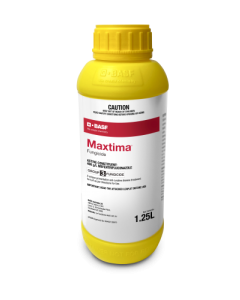 Maxtima FungicideActive: 400g/l Mefentrifluconazole
Maxtima FungicideActive: 400g/l MefentrifluconazoleMaxtima® is a revolutionary, broad spectrum DMI fungicide that can be applied on any turf, at any temperature and anywhere on your course.
$550.00 incl. GST$2,198.90 incl. GST -
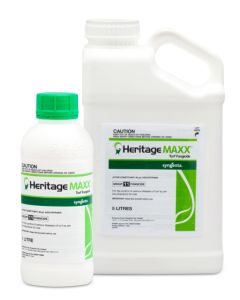 Heritage Maxx FungicideActive: 95g/l Azoxystrobin
Heritage Maxx FungicideActive: 95g/l AzoxystrobinHeritage Maxx combines systemic activity through xylem mobility, and translaminar movement to encourage multi-site uptake...
$187.00 incl. GST$765.60 incl. GST -
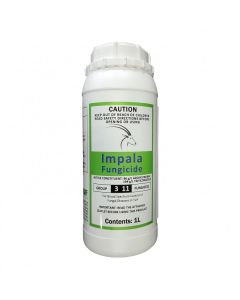 Impala FungicideActive: 96g/l Azoxystrobin
Impala FungicideActive: 96g/l AzoxystrobinImpala is formulated for broad spectrum control of fungal diseases in turf.
$231.00 incl. GST$825.00 incl. GST -
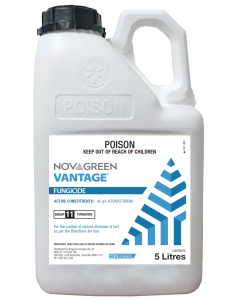 Vantage FungicideActive: 95g/L Azoxystrobin
Vantage FungicideActive: 95g/L AzoxystrobinVantage fungicide is a broad spectrum, systemic fungicide containing 95 g/L of the active constituent Azoxystrobin, a trusted chemistry for Australian turf professionals.
$137.50 incl. GST$496.10 incl. GST
JOIN OUR NEWSLETTER NOW!
Be the first to hear about the latest specials, products, tips and ideas.


